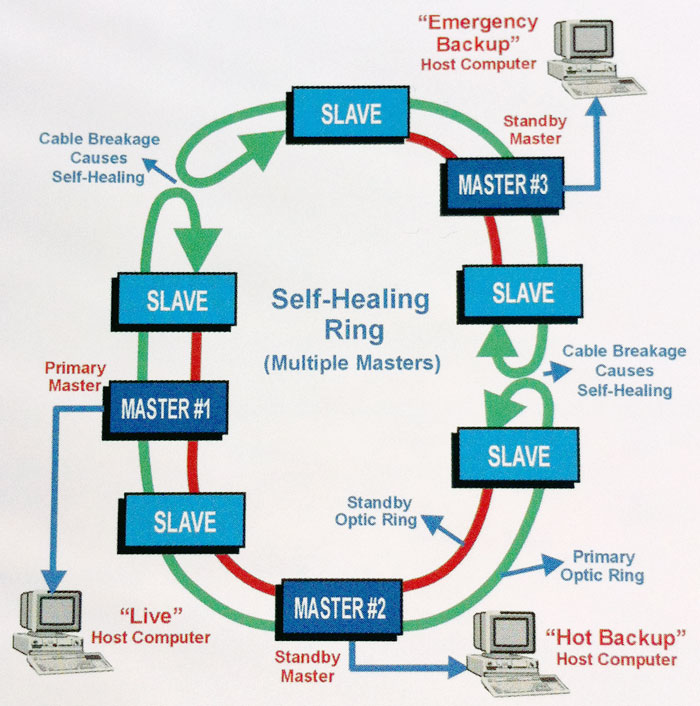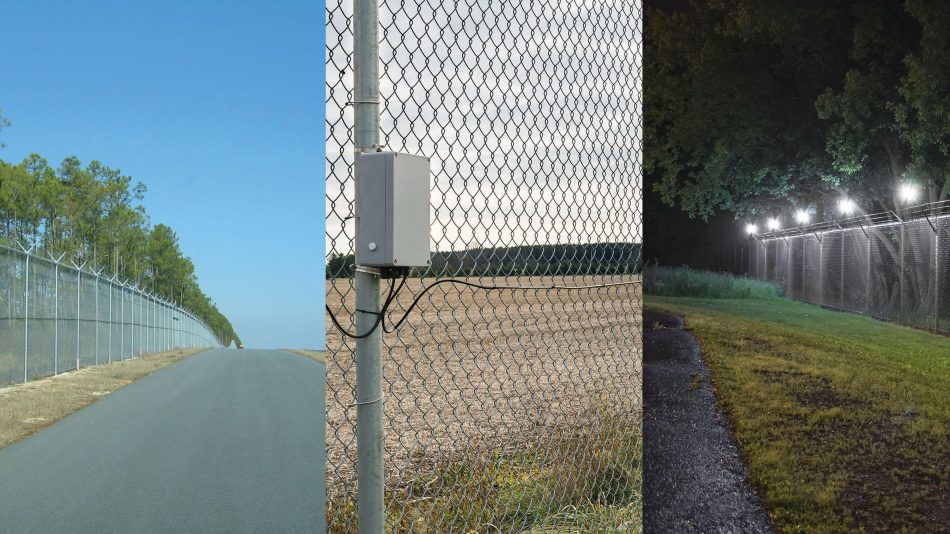Key Aspects of Fiber Optics Infrastructure for Security Installations You Need to Know
Key Aspects of Fiber Optics Infrastructure for Security Installations You Need to Know
Blog Article
Why Fiber Optic Protection Equipments Are the Future of Protection
The transition to fiber optic safety systems notes a substantial advancement in the world of protection, driven by their phenomenal data transmission capabilities and strength to exterior interferences. As the landscape of protection progresses together with arising technologies such as AI and IoT, the capacity for fiber optics to enhance and redefine protection frameworks becomes significantly evident.
Advantages of Fiber Optic Equipments
One of the main advantages of fiber optic systems is their premium bandwidth capability, which helps with the transmission of huge volumes of data over fars away without significant loss. This particular is especially helpful for protection applications that require the continuous surveillance and transfer of high-def video feeds, sensor information, and various other crucial info. Optical fiber can fit the growing needs of contemporary safety and security systems, ensuring that information remains undamaged and trusted.
In addition, fiber optic wires are much less susceptible to electro-magnetic disturbance, which can be a considerable problem in atmospheres with numerous electronic devices. This resistance boosts the honesty of the data being transferred, thus lessening the risk of data violations or system failures. In addition, fiber optic systems are naturally a lot more protected than typical copper cables, as tapping right into a fiber optic line without detection is exceedingly challenging.
The sturdiness of fiber optic wires additionally adds to their appeal. They are resistant to environmental variables such as wetness and temperature level fluctuations, decreasing maintenance prices and raising system durability. Generally, these advantages position fiber optic systems as a durable and efficient choice for modern-day protection infrastructures, making certain trustworthy and protected information transmission.
Improved Information Transmission Rate

The ability to send substantial amounts of information promptly facilitates the smooth assimilation of high-definition video feeds and advanced analytics. Safety and security systems can currently refine and analyze details in real-time, enhancing response times and situational recognition. Additionally, fiber optic links sustain longer transmission distances without destruction of signal top quality, making them suitable for large safety networks.
The increased rate of fiber optic systems not just enhances the effectiveness of safety and security operations yet additionally decreases latency. This is especially important in critical scenarios where prompt decision-making can avoid safety and security breaches or alleviate potential risks. As companies continue to focus on safety and efficiency, the need for fast and trusted information transmission will certainly solidify fiber optic systems as a foundation of contemporary security facilities.
Resistance to Interference
Fiber optic safety systems consistently show phenomenal resistance to electro-magnetic disturbance, a crucial advantage in environments prone to digital sound. Unlike standard copper cables, which can be negatively affected by electro-magnetic areas, superhigh frequency disturbance, and various other forms of electric disruption, fiber optic cables use light to send information. This integral property guarantees that the signals continue to be clear and unchanged, no matter surrounding digital activity.
Using glass or plastic fibers in fiber optic technology creates an obstacle against interference, permitting dependable information transmission even in challenging scenarios such as industrial centers, metropolitan locations with high electronic traffic, or areas near radio towers. This particular substantially minimizes the chance of signal degradation or loss, making fiber optic systems specifically suitable for security applications where stability and precision of information are extremely important.
Moreover, this resistance to disturbance improves the general efficiency and reliability of safety and security systems, guaranteeing that surveillance and alert systems function seamlessly. In a world where safety is increasingly threatened by sophisticated modern technologies, the strength check out here of fiber optic systems stands apart as a crucial attribute, reinforcing their standing as an important element of modern-day safety facilities.
Cost-Effectiveness Gradually
Significant expense savings can be attained with time with the implementation of fiber optic safety and security systems. While the first investment might seem greater contrasted to conventional copper-based systems, the long-lasting monetary advantages look at this web-site emerge through reduced functional and maintenance costs (fiber security). Fiber optic cable televisions are naturally a lot more sturdy and much less susceptible to environmental aspects, which equates to decrease replacement and repair costs over their life expectancy
Additionally, fiber optic systems require much less power to operate, which additionally reduces energy expenses. Boosted information transmission capacities permit less repeaters and amplifiers, reducing devices financial investment and enhancing setup processes. The scalability of these systems additionally adds to cost-effectiveness, as organizations can increase their protection infrastructure without incurring substantial added expenditures.
An additional variable to take into consideration is the increased efficiency in tracking and action capacities that optical fiber give. Enhanced real-time data transmission can result in quicker occurrence response times, potentially mitigating losses and liabilities connected with protection violations. In amount, the lasting benefits of fiber optic security systems not only justify the initial expense however additionally position them as a financially prudent selection for organizations looking for durable defense options.

Future Innovations in Safety And Security
Progressing innovations are established to change security systems, integrating synthetic knowledge (AI) and machine knowing to improve danger discovery and reaction abilities. These technologies will certainly allow safety and security systems to analyze vast quantities of data in real-time, identifying patterns and anomalies that show possible risks. This proactive technique will certainly make it possible for faster decision-making and more find here reliable incident reactions.
Additionally, the consolidation of the Internet of Points (IoT) is paving the way for interconnected safety and security gadgets, using detailed surveillance and tracking. Smart sensors can pass on information concerning ecological changes, while automated signals can inform security personnel quickly of dubious activities.
Additionally, the evolution of biometric technologies will better bolster safety and security mechanisms. Facial recognition, finger print scanning, and retina recognition are ending up being more innovative, giving layers of authentication that are difficult to bypass.
Verdict
Finally, fiber optic protection systems stand for a considerable advancement in security innovation, using unrivaled data transmission speed, resistance to electromagnetic disturbance, and lasting cost-effectiveness. As the need for sophisticated protection solutions remains to expand, the integration of optical fiber with emerging modern technologies such as AI, IoT, and biometrics will additionally boost safety facilities (fiber security). The combination of these advancements will ensure an extra safe and secure and receptive environment, strengthening fiber optics as a cornerstone of future security systems
Report this page